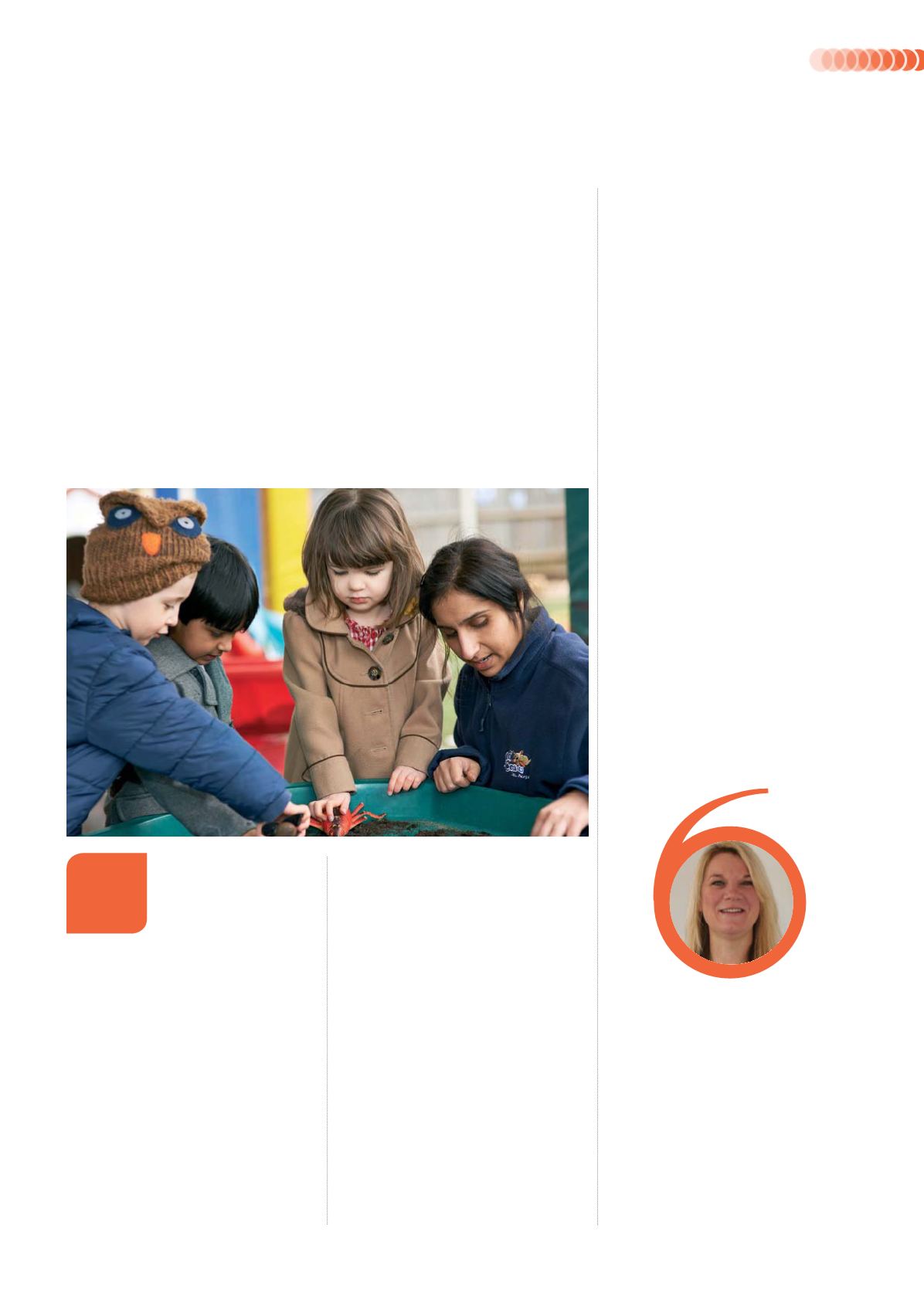
earlyyears.teachwire.net
41
No matter how big or small it might be,
improving your nursery’s garden area can pay
dividends, both in terms of children’s learning
outcomes and the popularity of your business...
nursery’s garden area
should be an extension of
the setting itself, a space
that when well designed
will support children in
their learning and development, as well
as providing a safe and exciting place to
explore and play in the fresh air. This is
certainly the view of those at Kiddi Caru
(kiddicaru.com), where staff and children
alike can be found outside whatever
the weather – at each of the group’s 20
nurseries there’s always something to
occupy curious minds, and plenty of
space for energy to be expended.
In support of this approach, Kiddi
Caru has invested heavily in developing
its outdoor provision in recent times,
creating feature-packed spaces that have
delighted children, parents and staff
alike. But what does an outstanding
outdoor area need, and aside from the
Investing
in your
outdoors
obvious learning and developmental
pluses, how can such an investment
benefit a business? We asked Kiddi
Caru’s Marketing Manager, Caron
Moseley, for her thoughts...
How much should
nurseries spend on
an outdoor area?
“How long is a piece of string? You can
spend huge amounts on an outdoor
space if you want to – hiring professional
companies to plan and install fantastic
gardens. It’s perhaps better to approach
it by thinking about what it is you want
to achieve from your outdoor space, and
then working out a budget from there.
“Hiring an external garden design
company is a great idea as whoever you
choose will likely have a huge amount
of experience and can give guidance on
A
“Think about
what it is you
want to achieve
from your
outdoor space,
then work
out a budget
from there.”
nursery business
what will be suitable for the space you
have. However, you and your team need
to make it your own. To this end, it is
important to think about what interests
the children that are currently in your
care. One approach to this is to talk to the
children themselves. We have achieved
a great deal using this method. However,
don’t make the mistake of asking them
what equipment they want outside – you
will get an extremely long shopping list!
Instead, speak about what the children
would like to do outside (e.g. go on
imaginary journeys, explore and ask
questions, get active, or just sit and watch
the world around them – all have value!).
“If money is tight, you can still create
an interesting space on a small budget.
Think about what indoor resources can
be used outdoors – for example, art and
craft materials. Use recycled materials – a
blanket between two cardboard boxes
makes an engaging but inexpensive secret
den! Old house guttering fixed to the fence
can make a water run, or a planter for
seeds and saplings. Old wellies can make
great plant pots! There is no limit to what
can be achieved with a little imagination.
“Whichever approach you take, it’s
important to remember that your outdoor
space should be constantly evolving and
developing. and needs to be replenished
and resourced regularly in the same way
as your inside space.”


